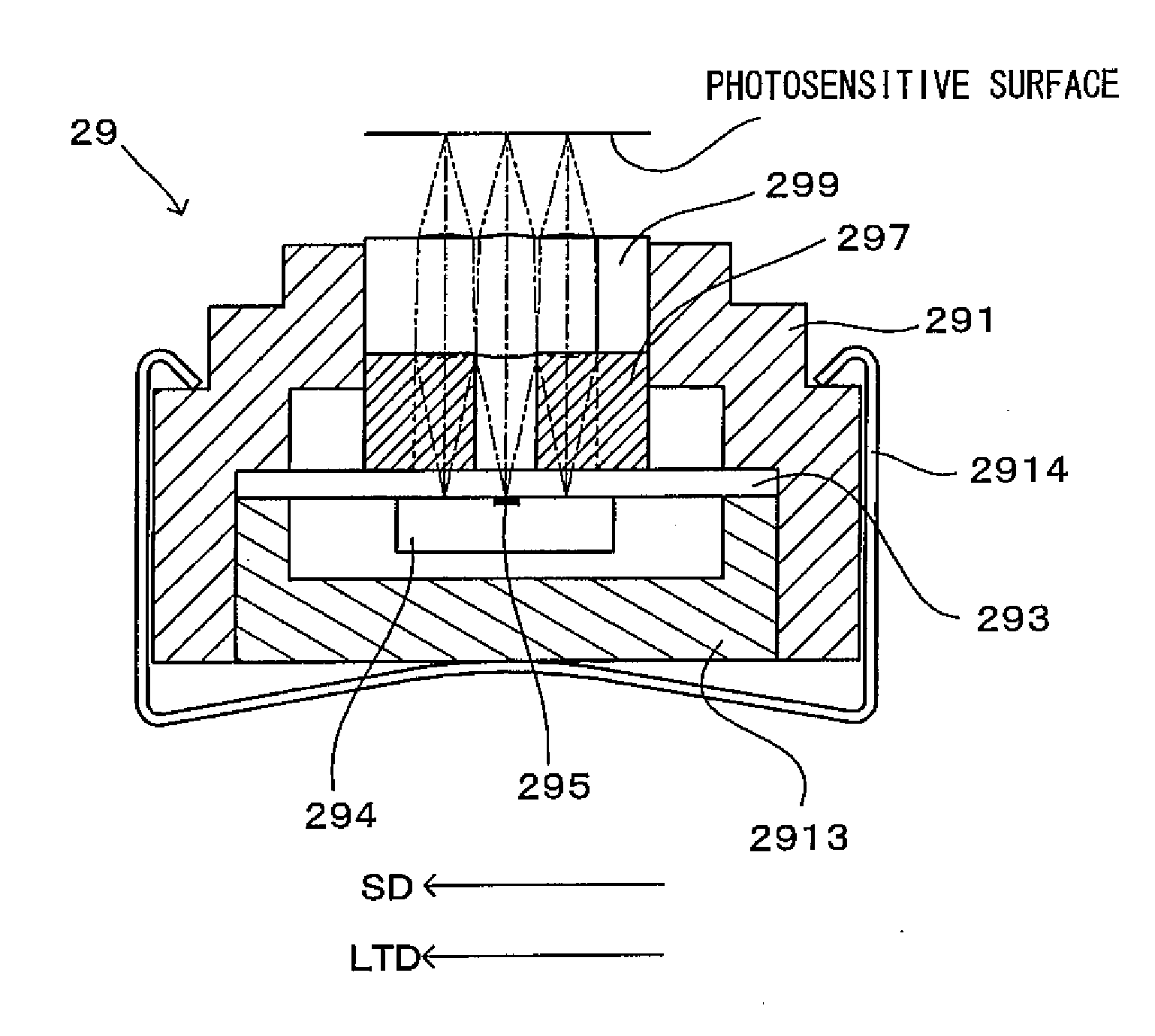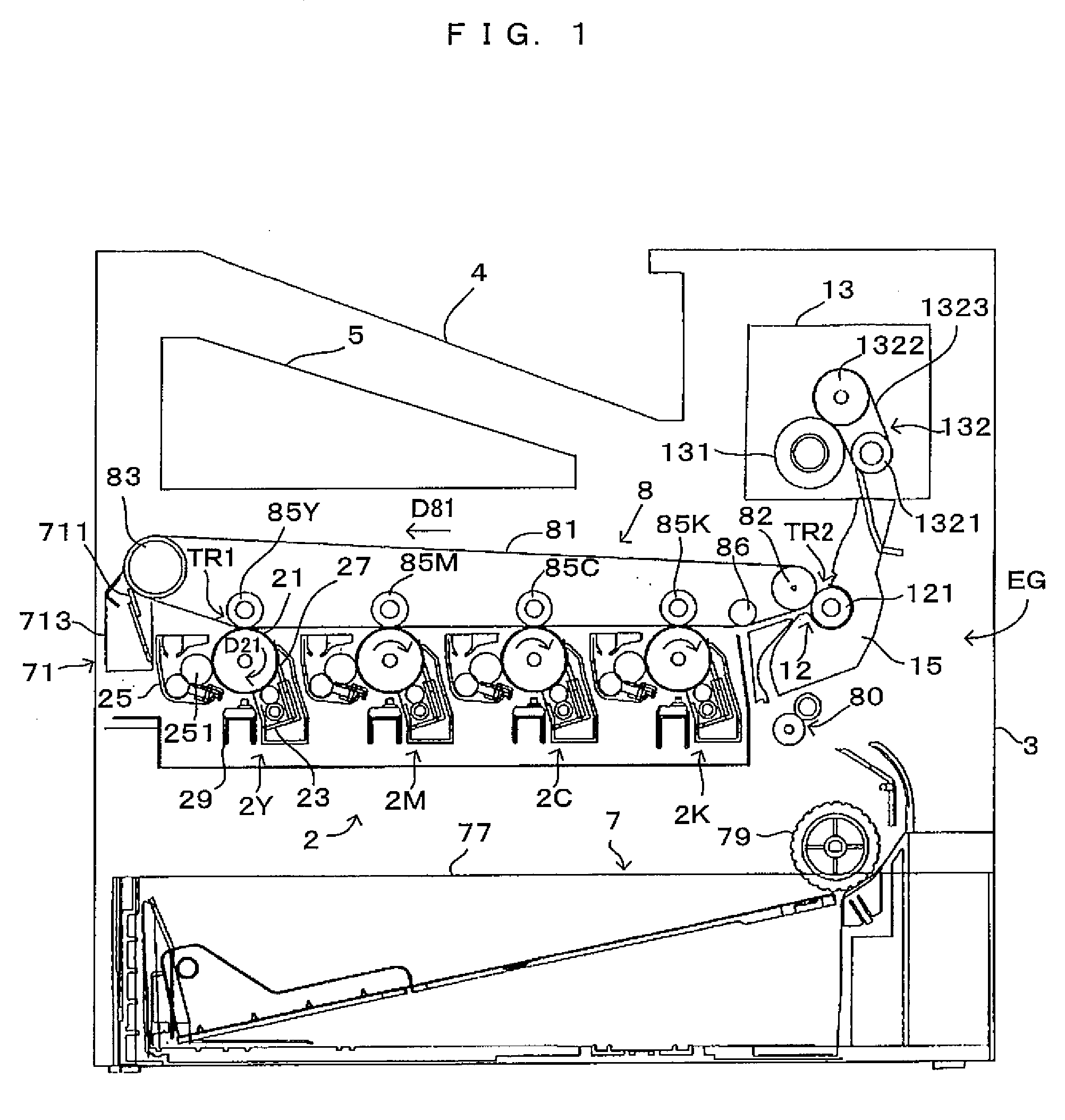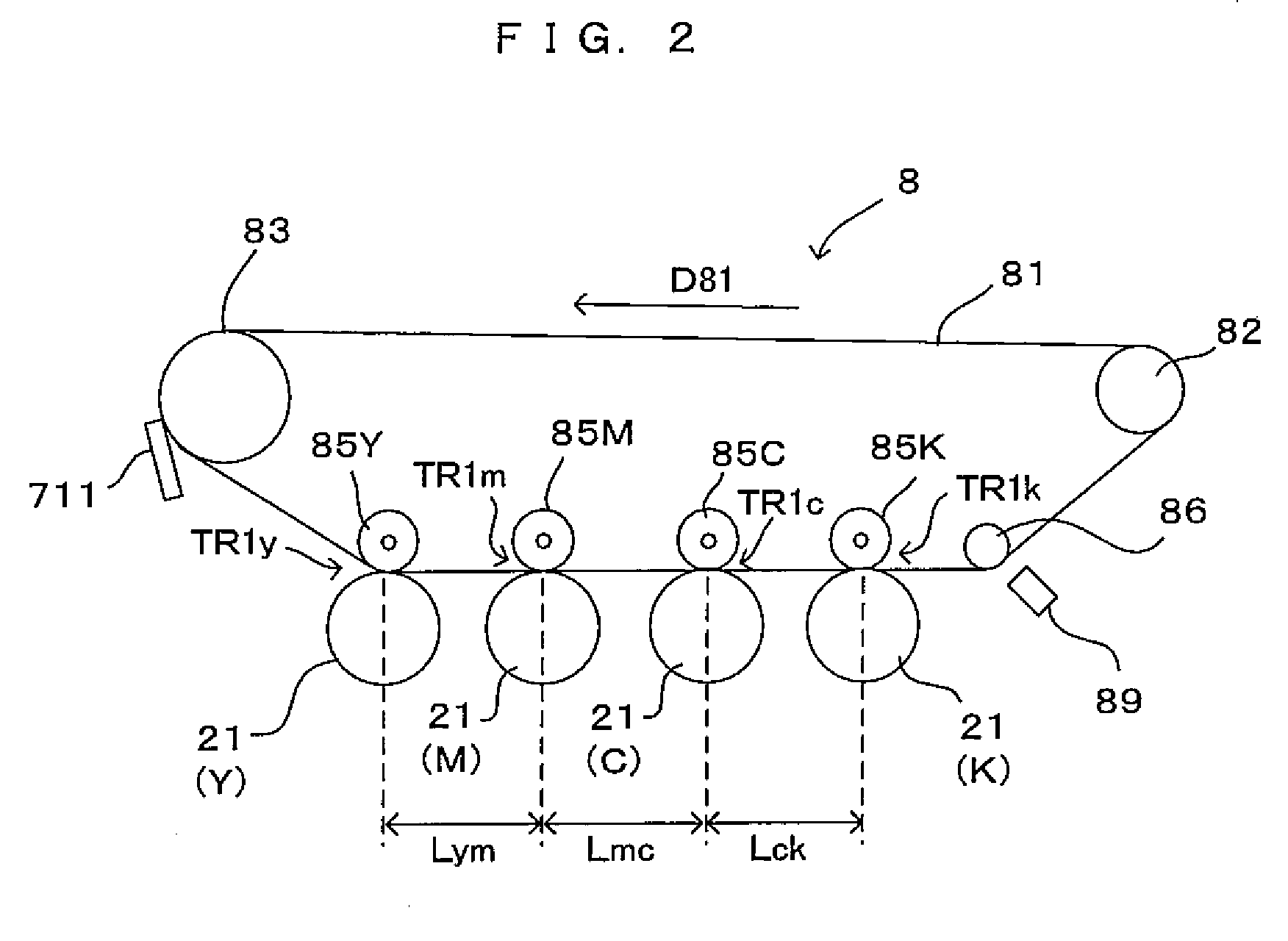Line Head and Image Forming Apparatus Using the Same
a technology of image forming apparatus and line head, which is applied in the direction of electrographic process apparatus, printing, instruments, etc., can solve the problems of inability to create favorable spots, failure to form favorable spots, and inability to obtain sufficient drive current, so as to reduce the number of driver ics, reduce the probability of occurrence, and improve the effect of resolution
- Summary
- Abstract
- Description
- Claims
- Application Information
AI Technical Summary
Benefits of technology
Problems solved by technology
Method used
Image
Examples
first embodiment
[0067]FIG. 1 is a drawing which shows an image forming apparatus according to a first embodiment of the invention. FIG. 2 is a drawing which shows an arrangement of image forming stations in the image forming apparatus of FIG. 1. FIG. 3 is a drawing which shows the electric structure of the image forming apparatus shown in FIG. 1. This apparatus is an image forming apparatus which is capable of selectively executing a color mode for superimposing toner in four colors of black (K), cyan (C), magenta (M) and yellow (Y) one atop the other and accordingly forming a color image and a monochrome mode for forming a monochrome image using toner in the black color (K) alone. In this image forming apparatus, when an external apparatus such as a host computer gives an image forming command to a main controller MC which comprises a CPU, a memory and the like, the main controller MC provides an engine controller EC with a control signal or the like. Based on the signal or the like, the engine co...
second embodiment
[0123]Although the embodiments above require forming the light emitting element groups 295 in the manner shown in FIG. 8, the structure of the light emitting element groups 295 is not limited to this. The important benefit is that as the embodiments require that the main-scanning-direction group pitch Px is wider than the sub-scanning-direction group pitch Py in the line head which has the structure that the main-scanning-direction group width Gx is wider than the sub-scanning-direction group width Gy, it is possible to form favorable spots while suppressing crosstalk in the main scanning direction MD. The light emitting element groups may therefore be formed as described below, for instance.
[0124]FIG. 16 is a drawing which shows the structure of the light emitting element groups according to a second embodiment of the invention. In FIG. 16, one light emitting element group 295 is formed by arranging in the lateral direction LTD corresponding to the sub scanning direction SD two lig...
third embodiment
[0127]FIG. 17 is a cross sectional view of the line head (exposure section) according to a third embodiment of the invention taken along the sub scanning direction. In short, the line head shown in FIG. 17 uses LEDs as the light emitting elements. A major difference from the line head which uses organic ELs as the light emitting elements described with reference to FIG. 4 lies in the positions at which the light emitting elements are disposed. As shown in FIG. 5, in the line head which uses organic ELs as the light emitting elements, the light emitting elements (light emitting element groups 295) are disposed on the back surface of the glass substrate 293. Meanwhile, in the line head shown in FIG. 17 which uses LEDs as the light emitting elements, the light emitting elements are disposed on the front surface of the glass substrate 293. The other structures are common between the line heads shown in FIGS. 5 and 17, and therefore, the common features are denoted at corresponding refer...
PUM
 Login to View More
Login to View More Abstract
Description
Claims
Application Information
 Login to View More
Login to View More - R&D
- Intellectual Property
- Life Sciences
- Materials
- Tech Scout
- Unparalleled Data Quality
- Higher Quality Content
- 60% Fewer Hallucinations
Browse by: Latest US Patents, China's latest patents, Technical Efficacy Thesaurus, Application Domain, Technology Topic, Popular Technical Reports.
© 2025 PatSnap. All rights reserved.Legal|Privacy policy|Modern Slavery Act Transparency Statement|Sitemap|About US| Contact US: help@patsnap.com



